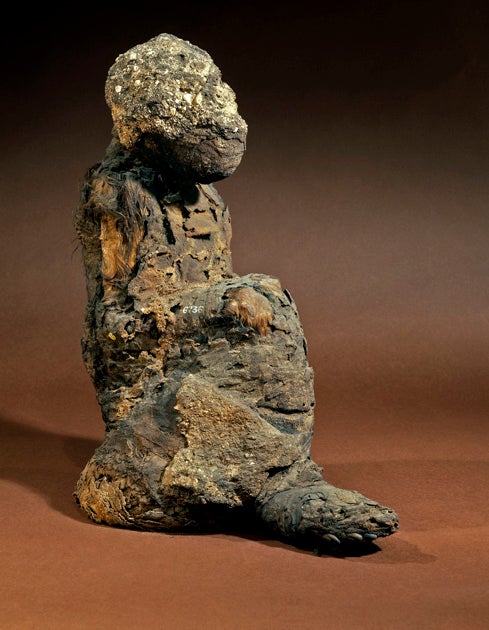Baboon mummy analysis reveals Eritrea and Ethiopia as location of land of Punt

Analysis of mummified baboons in the British Museum has revealed the location of the land of Punt as the area between Ethiopia and Eritrea. To the Egyptians, Punt was a place of fragrances, giraffes, electrum and other exotic goods, and was sometimes referred to as Ta-netjer, or 'God’s land'.
There are several ancient Egyptian texts that record trade voyages to the Land of Punt, dating up until the end of the New Kingdom, 3,000 years ago. But until now scholars did not know where Punt was. Ancient texts offer only vague allusions to its location and no 'Puntite' civilization has been discovered. Somalia, Ethiopia, Yemen and even Mozambique have all been offered as possible locations.
However, it appears that the search for Punt may have come to an end according to new research which claims to prove that it was located in Eritrea/East Ethiopia. Live baboons were among the goods that we know the Egyptians got from Punt. The research team included Professor Salima Ikram from the Egyptian Museum, Cairo, and Professor Nathaniel Dominy and graduate student Gillian Leigh Moritz, both from the University of California, Santa Cruz.
The team studied two baboon mummies in the British Museum. By analysing hairs from these baboons using oxygen isotope analysis, they were able to work out where they originated. Oxygen isotopes act as a 'signal' that can let scientists know where they came from. Depending on the environment an animal lived in, the ratio of different isotopes of oxygen will be different. “Oxygen tends to vary as a function of rainfall and the water composition of plants and seed,” said Professor Nathaniel Dominy of UC Santa Cruz.
Only one of the two baboons was suitable for the research – the other had spent time in Thebes as an exotic pet, and so its isotopic data had been distorted. Working on the baboon discovered in the Valley of the Kings, the researchers compared the oxygen isotope values in the ancient baboons to those found in their modern day brethren. Although isotope values in baboons in Somalia, Yemen and Mozambique did not match, those in Eritrea and Eastern Ethiopia were closely matched.
“All of our specimens in Eritrea and a certain number of our specimens from Ethiopia – that are basically due west from Eritrea – those are good matches,” said Professor Dominy.
The team were unable to compare the mummies with baboons in Yemen. However, Professor Dominy reasoned that “We can tell, based on the isotopic maps of the region, that a baboon from Yemen would look an awful lot like a baboon from Somalia isotopically.” As Somalia is definitely not the place of origin for the baboon, this suggests that Yemen is not the place of origin either.
He concluded that “We think Punt is a sort of circumscribed region that includes eastern Ethiopia and all of Eritrea.”
The team also think that they may have discovered the location of the harbour that the Egyptians would have used to export the baboons and other goods back to Egypt. Dominy points to an area just outside the modern city of Massawa: “We have a specimen from that same harbour and that specimen is a very good match to the mummy.”
Next, the team hopes to get the British Museum’s permission to take a pea-sized sample of bone from the baboon mummy and use it strontium isotope testing. This would hopefully confirm Eritrea/Eastern Ethiopia as the baboon’s origin and narrow down its location more specifically.
British Museum’s Baboon Mummies May Hold Clue to Location of Punt
Subscribe to Independent Premium to bookmark this article
Want to bookmark your favourite articles and stories to read or reference later? Start your Independent Premium subscription today.

Join our commenting forum
Join thought-provoking conversations, follow other Independent readers and see their replies